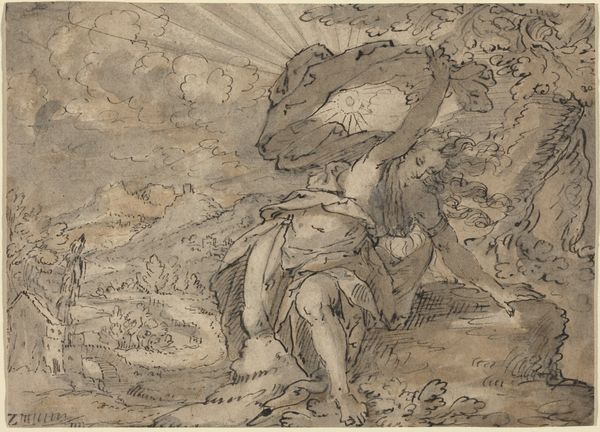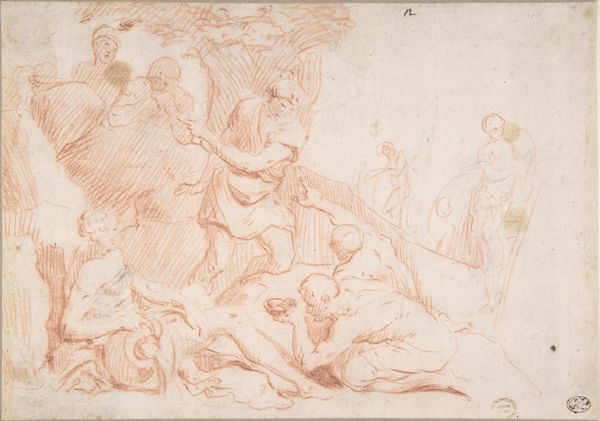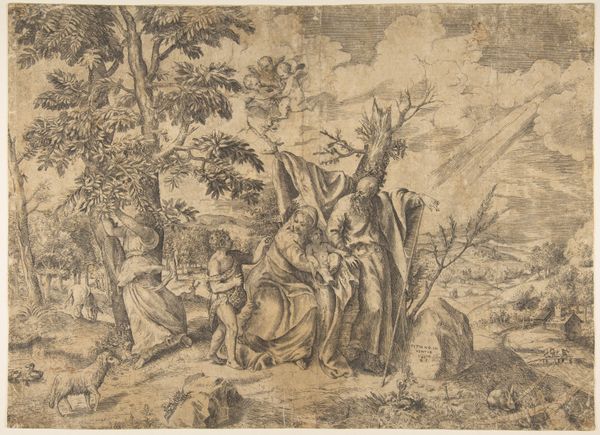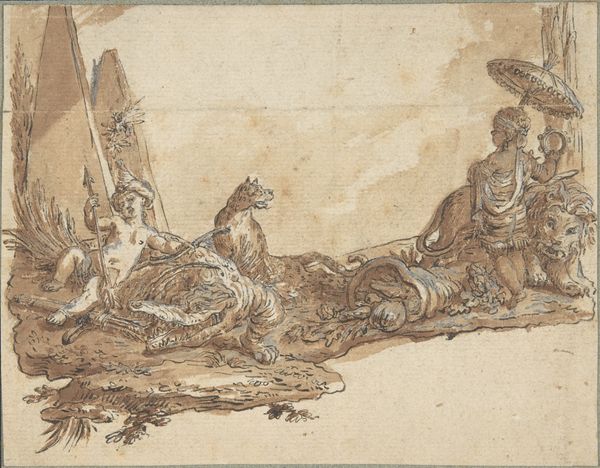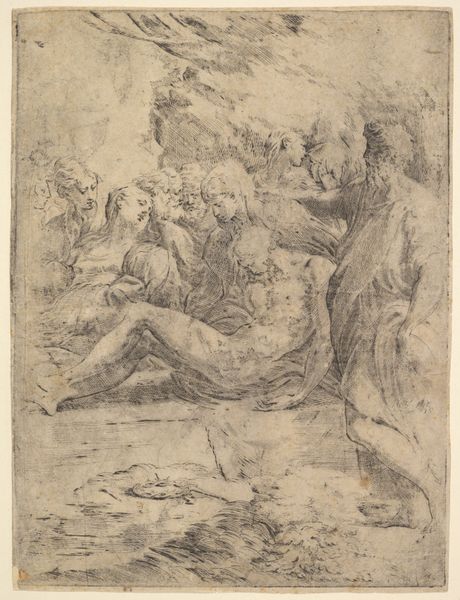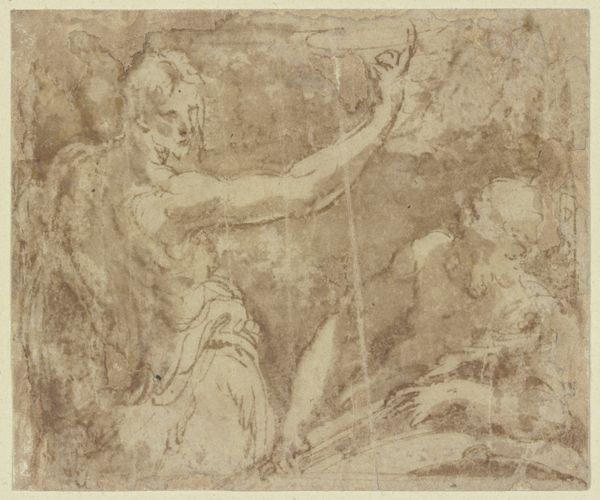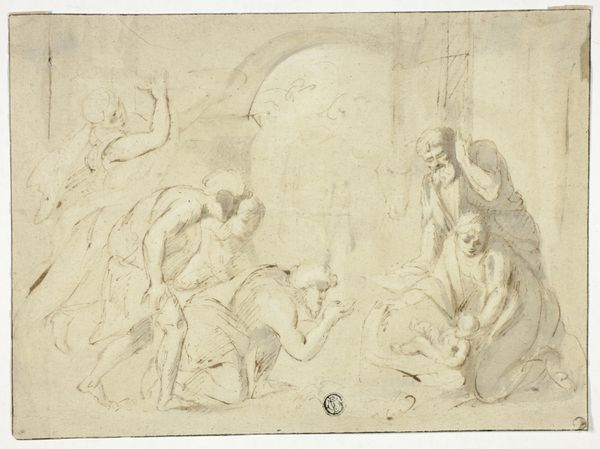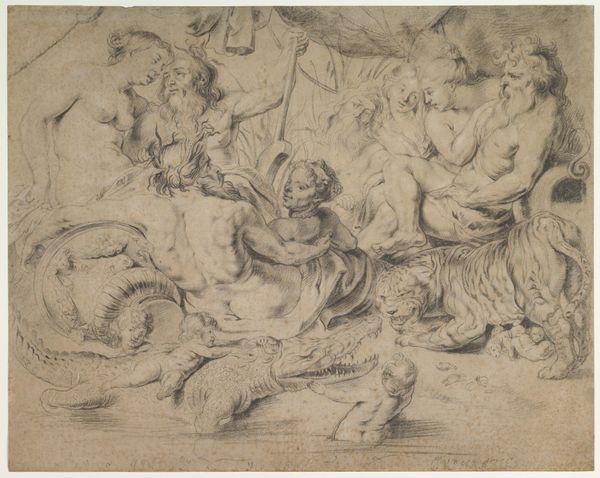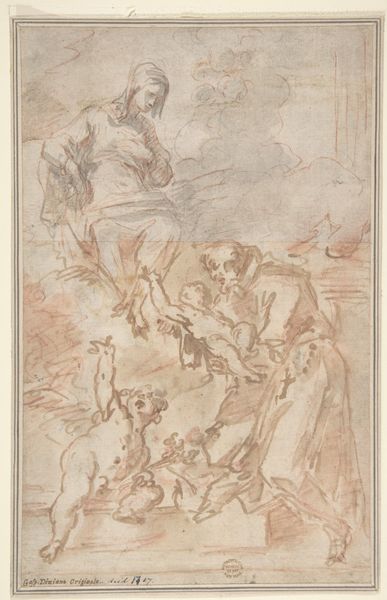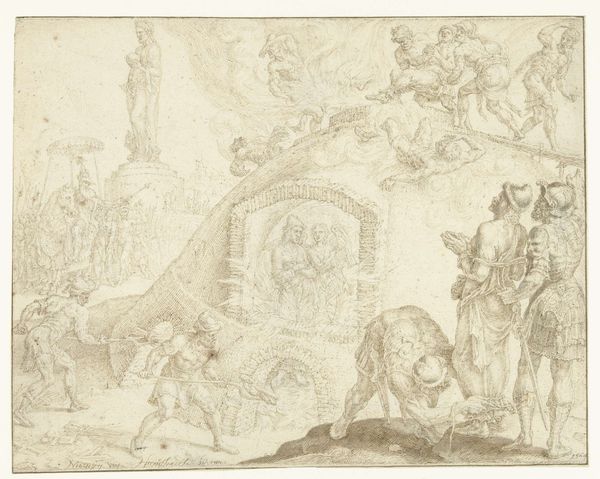
Illustration for a Book: Allegory of Venice 1696 - 1770
0:00
0:00
drawing, print
#
drawing
#
amateur sketch
#
toned paper
#
light pencil work
#
animal
# print
#
pen sketch
#
pencil sketch
#
incomplete sketchy
#
underpainting
#
pen-ink sketch
#
men
#
watercolor
#
initial sketch
Dimensions: 2-7/8 x 6 in. (7.3 x 15.2 cm)
Copyright: Public Domain
Editor: Here we have "Illustration for a Book: Allegory of Venice," a print and drawing created sometime between 1696 and 1770 by Giovanni Battista Tiepolo. It's at the Met in New York. It feels… unfinished, like a glimpse behind the curtain. What jumps out at you when you see it? Curator: Well, the initial sketchiness is exactly what grabs me. It's like catching Tiepolo in mid-thought. You see the lion, symbol of Venice, prominently featured, but rendered with such delicate lines. I wonder, does it project strength or vulnerability here? It is as if he's contemplating Venice's place, its identity – a reflection not just of power but perhaps the anxieties of a city in a changing world. The Doge flanked by attendants, the messenger bearing…what, news, decree, supplication? It teases you to invent the unseen narrative that Tiepolo could expand for us. How do you read this sense of open-endedness? Editor: I suppose the open-endedness invites us to project our own feelings about Venice, and maybe about power in general, onto the scene. Curator: Exactly! The magic is, Tiepolo gives you the *feeling* of Venice more than a literal depiction. It is an incomplete feeling, so the mind races to resolve that uncertainty with imaginings of Venice and ruminations on cultural themes that stir the human heart. That's where its evocative power lies. Think, what stories are conjured by the figures? The gesture, stance, or costume hints at their histories? Editor: So, it’s less about what *is* there, and more about what the suggestion inspires. Thanks! It definitely opens my eyes to seeing preliminary works in a whole new light. Curator: Absolutely! Seeing how a master gives birth to his inspirations allows a closer experience to his feelings. What we call beauty often arrives on our mental and emotional palettes well before pencil meets paper.
Comments
No comments
Be the first to comment and join the conversation on the ultimate creative platform.

